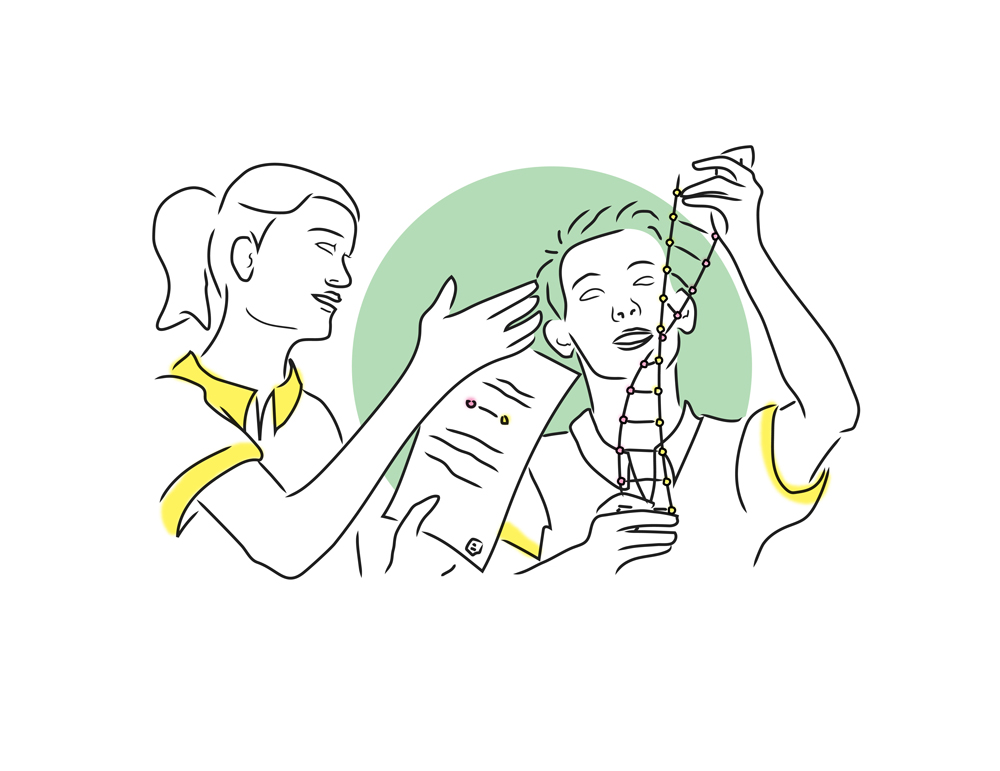Teaching creativity through touch
Canon champions the power of tactile learning, showing how paper-based activities spark creativity, improve collaboration, and enhance engagement.
At a time when digital tools are being utilised more and more in New Zealand classrooms, it’s worth remembering that paper remains one of the most effective ways to inspire creativity.
There’s something to be said for putting pen to paper. Paper-based learning activities offer a refreshing and effective approach to fostering creativity and improving learning outcomes, particularly when compared to digital learning tools. Far from being an outdated learning practice, tactile experiences offer cognitive and emotional benefits that digital tools can’t match. In fact, research shows that paper-based learning supports divergent thinking, promotes collaboration, and provides a calm, focused environment for learning, all of which are key to sparking creativity.
In ACTivities: Fostering Creativity through Tactile Learning Activities, of researchers revealed how tactile learning experiences stimulate creative thinking. In contrast to digital experiences, paper-based learning allows for open-ended experimentation, giving students opportunities to approach problems playfully and collaboratively. These interactions help students develop mental maps—an essential component of divergent thinking—by allowing them to visualise abstract concepts in tangible ways.
Research also shows that writing or creating on paper can improve students’ ability to express ideas. Handwriting has been shown to activate areas of the brain associated with working memory and idea generation, leading students to produce more creative and varied responses than typing.
Exploring and manipulating physical materials stimulates creative thinking in students.

Paper-based learning helps students to visually and physically organise their thoughts. Interacting with physical materials, making notes, annotating texts and worksheets, drawing diagrams and even creating three dimensional paper models all test and develop students’ organisational skills and critical thinking abilities.
Sitting around a desk with paper-based learning materials can help students develop better communication skills. Paper-based learning activities often require students to share their ideas and clearly articulate their thinking, unlike digital tasks, which are typically completed individually. By working together with their classmates and learning to communicate effectively, students also become more confident communicators.
Collaboration is another area where paper-based learning trumps digital methods. Group activities involving physical materials—whether brainstorming on large sheets of paper, solving puzzles with printed cut-outs, or sketching shared ideas—encourage students to work together, and exchange creative ideas and perspectives.
As we can see, there are plenty of reasons to continue using paper-based learning materials. Far from being an outdated approach to education, paper-based learning materials are as relevant as they’ve ever been. The humble print out, for example, remains a powerful tool for stimulating creativity, enhancing focus and promoting better learning outcomes. Whether in the classroom or at home, the act of engaging with paper allows students to slow down, think deeply and come up with new and interesting ideas.
By encouraging students to put pen to paper, we’re giving them the freedom to think, explore and create— unlocking their potential to solve problems and generate new ideas. As schools continue to embrace digital transformation, ensuring that paper retains its rightful place in the learning process is an investment in the creativity and success of future generations.

Streamlining classroom workflows, staying on top of budgets and reducing paper waste starts with choosing the right print partner. From simplifying everyday printing to igniting a passion for learning across a range of subjects, scores of schools have trusted Canon to deliver the solutions they need.
Learn more about our Education Solutions or book a free assessment of your print and scan environment with one of our experts.

Canon highlights the lasting benefits of paper-based learning, from better comprehension to improved student well-being.

Canon explores how handwriting boosts memory, focus, and comprehension, making pen and paper a powerful complement to digital tools.

IPG tells the story of how Canon helped transform their business into a digitised office through imageRUNNER ADVANCE and uniFLOW Online.

Watch Canon Ambassador James Simmons take us through his process to print his recent personal project on the Canon imagePROGRAF PRO 2100.

The Walgett Shire Council prides itself on being a progressive local government serving a community rich in nature, history, art and culture.

Faced with a deluge of information, ACO Polycrete’s print network was under increasing pressure and rising costs.

After 30 years of providing house and land packages, Hallmark Homes had amassed a staggering amount of paperwork.

How Christie Spaces transformed from just offering office spaces to inspiring a sense of community amongst its members.

When Mahoneys moved to larger premises, the firm looked to make improvements to security, efficiency and time. Mahoneys’ GM, Mike Haworth, tells the story.

Multi-award winning photographer Mercury Megaloudis took his studio to new heights, installing a Canon large format printer. The investment quickly paid off, business rolled in and costs came down.

LG achieved new efficiencies across its offices in Australia and New Zealand when it replaced an ageing print fleet of 91 devices with 47 Canon imageRUNNER C3080 and C5185 multifunctional devices.
For customer service and sales enquiries just give us a call from within Australia
(8am to 5pm, Monday - Friday)